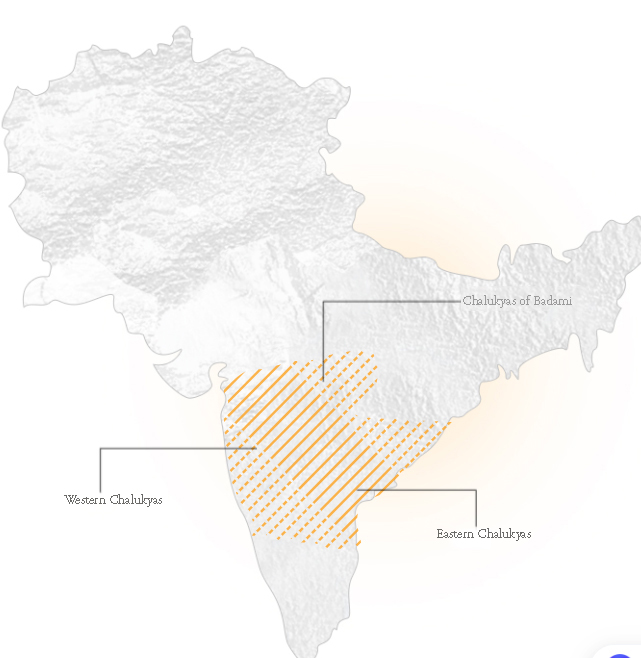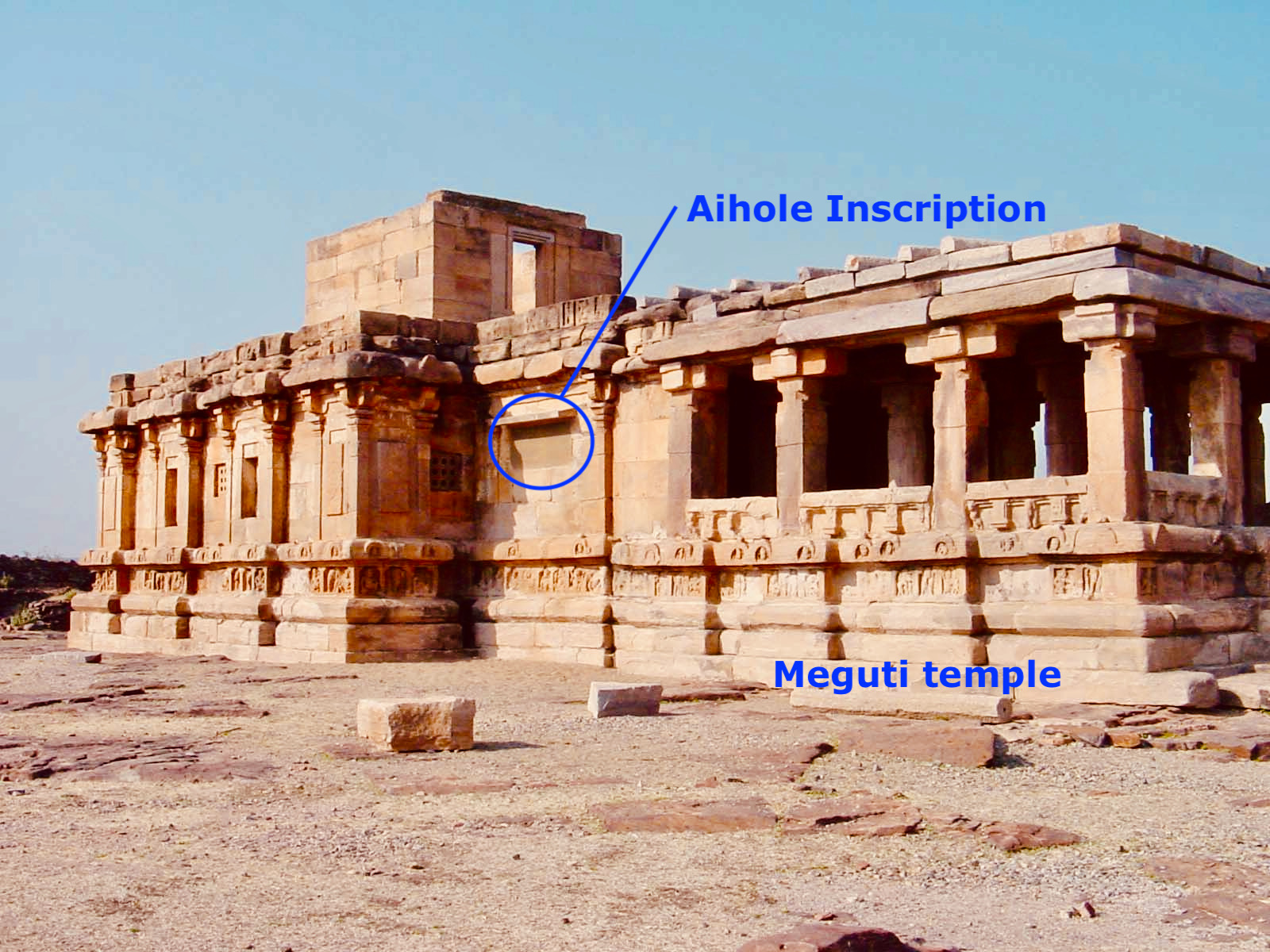Indian Heritage & Culture
Temple Discoveries Highlight Chalukya Expansion
- 06 Mar 2024
- 6 min read
For Prelims: Badami Chalukyan, Mudimanikyam village, Gandaloranru, Jogulamba temples at Alampur, submerged sites of Yeleswaram, Architectural Design of Chalukya Period, Aihole Inscription of Pulikesin II.
For Mains: Key Features Related to the Chalukya Dynasty
Why in News?
Archaeologists from the Public Research Institute of History, Archaeology, and Heritage (PRIHAH) have unearthed two ancient temples dating back to the Badami Chalukyan period, along with a rare inscription, in Mudimanikyam village of Nalgonda district, Telangana.
What are the Major Highlights of the Recent Excavation?
- Temples: Located at the end of the village, the two temples date back to between 543 AD and 750 AD, corresponding to the rule of the Badami Chalukyas.
- They showcase unique architectural styles, blending Badami Chalukyan and Kadamba Nagara style in the Rekha nagara format.
- In one temple, a panavattam (base of a Shiva lingam) in the sanctum sanctorum has been found.
- In another, a Vishnu idol was recovered.
- Inscription: The discovery also includes an inscription, labeled as 'Gandaloranru', dating back to the 8th or 9th Century AD.
- Significance: Previously, the Jogulamba temples at Alampur and the submerged sites of Yeleswaram were considered the farthest reaches of the Badami Chalukya influence.
- The new discovery extends the known boundaries of the Chalukya kingdom significantly.
What are the Key Features Related to the Chalukya Dynasty?
- About: The Chalukya dynasty governed significant territories in southern and central India from the 6th to the 12th centuries.
- It comprised three distinct dynasties: the Chalukyas of Badami, the Eastern Chalukyas, and the Western Chalukyas.
- The Chalukyas of Badami, originating in Vatapi (modern Badami in Karnataka), ruled from the early 6th century until the mid-8th century, reaching their zenith under Pulakeshin II.
- After Pulakeshin II's reign, the Eastern Chalukyas emerged as an independent kingdom in the eastern Deccan, centred around Vengi (in present-day Andhra Pradesh) until the 11th century.
- The rise of the Rashtrakutas in the 8th century overshadowed the Chalukyas of Badami in the western Deccan.
- However, their legacy was revived by their descendants, the Western Chalukyas, who ruled from Kalyani (modern Basavakalyan in Karnataka) until the late 12th century.
- Foundation: Pulikesin I (c. 535-566 CE) is credited with fortifying a hill near Badami, laying the foundation for the Chalukya dynasty's ascendancy.
- The city of Badami was formally founded by Kirtivarman (566-597), serving as the epicentre of Chalukya power and culture.
- Polity and Administration: The Chalukyas implemented a structured administrative system, dividing their realm into political units for effective governance.
- These divisions included Vishayam, Rastram, Nadu, and Grama.
- Religious Patronage: The Chalukyas were notable patrons of both Saivism and Vaishnavism.
- Beyond mainstream Hinduism, the Chalukyas also patronized heterodox sects, such as Jainism and Buddhism, exemplifying their commitment to religious diversity.
- Ravikirti, the poet-laureate of Pulikesin II, was a Jain scholar.
- According to the traveller Hiuen Tsang, there were many Buddhist centres in the Chalukya territory wherein more than 5000 followers of the Hinayana and Mahayana sects lived.
- Beyond mainstream Hinduism, the Chalukyas also patronized heterodox sects, such as Jainism and Buddhism, exemplifying their commitment to religious diversity.
- Architecture: Historically, in Deccan, Chalukyas introduced the technique of building temples using soft sandstones as medium.
- Their temples are grouped into two: excavated cave temples and structural temples.
- Badami is known for both structural and excavated cave temples.
- Pattadakal and Aihole are popular for structural temples.
- Their temples are grouped into two: excavated cave temples and structural temples.
- Literary: Chalukya rulers utilised Sanskrit for official inscriptions, showcasing their commitment to classical literature and language.
- Despite Sanskrit's prominence, the Chalukyas also acknowledged the significance of regional languages like Kannada, recognizing them as the language of the people.
- Painting: Chalukyas adopted the Vakataka style in painting. Paintings are found in a cave temple dedicated to Vishnu in Badami.
Aihole Inscription of Pulikesin II:
- Situated in the Megudi temple at Aihole, Karnataka, the Aihole inscription provides invaluable insights into Chalukya history and achievements.
- Aihole is considered as the cradle of Indian temple architecture.
- Crafted by the renowned poet Ravikriti, the inscription is a lyrical tribute to the Chalukya dynasty, particularly King Pulakesin II, lauded as the embodiment of truth (Sathyasraya).
- The inscription chronicles the Chalukya dynasty's triumphs over adversaries, including the renowned defeat of Harshavardhana.







